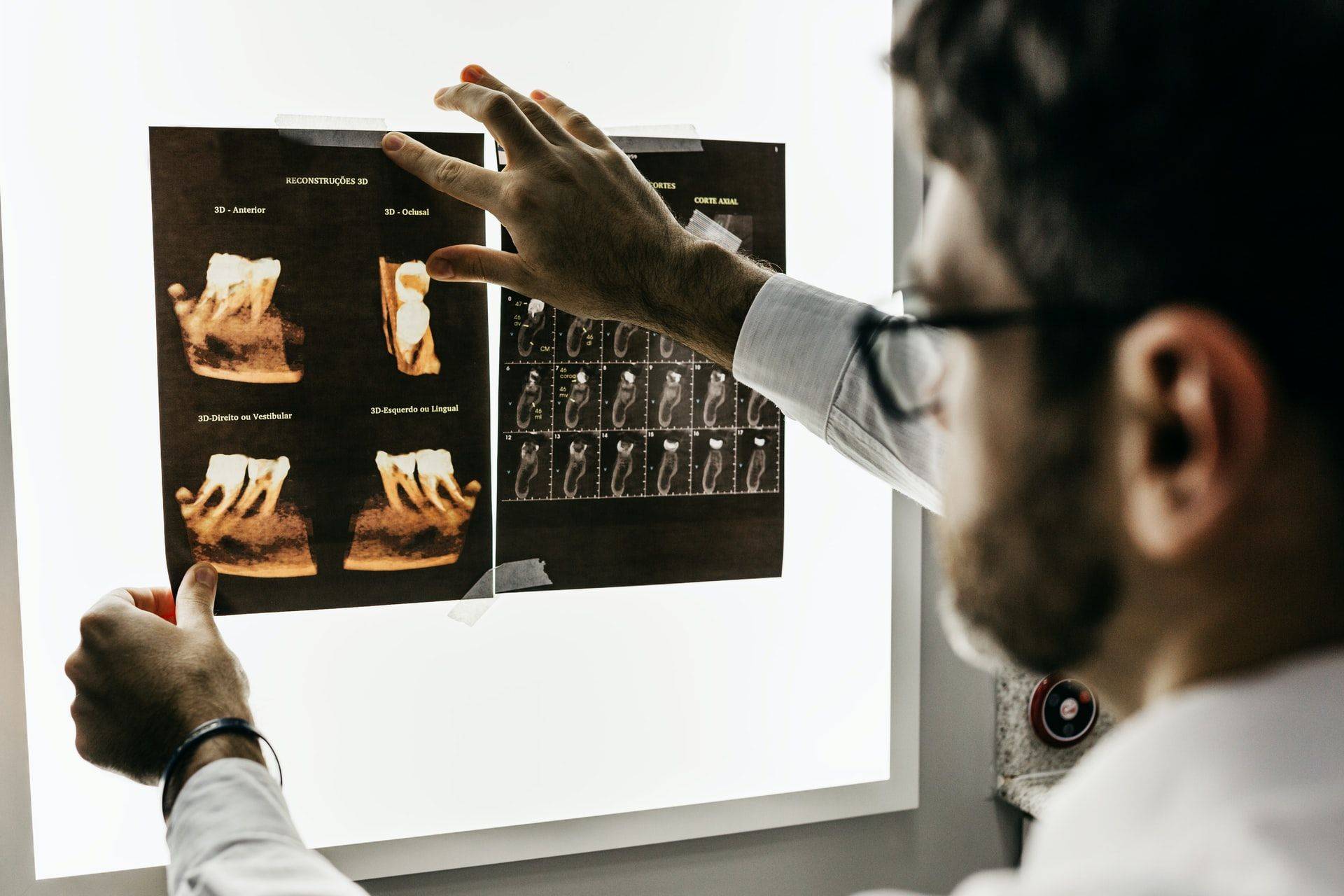



X-Ray: How It Works and Where to Get One in Hong Kong
13th November 2025


X-ray is, without dispute, one of the most common diagnostic tests and imaging techniques used by medical professionals to diagnose various body conditions and guide treatments.
It is sensible to wonder — is this procedure safe for you? In this complete guide, Alea has compiled all important info you need to know before you step into the X-ray room.
What is X-ray?
X-rays create images using small doses of ionized radiation (that can neither be felt nor seen by the naked eye) to penetrate the body — forming black-and-white images of the bones and other structures within the body. It is typically performed by a radiologist or a radiographer, but can be done also by other healthcare professionals.
Don’t underestimate the importance of these images, as they can play an instrumental role in the medical procedure. Your doctor can probe into the inside of your body without the need to put you under the knife, for better diagnosis, monitoring and treatment of many medical conditions.
Types of X-rays
Different types of X-rays are used for different purposes. The following are examples:
- Mammography to detect breast cancers.
- Computed tomography (CT) scans combine X-ray and computer processing to construct a more detailed 2D or 3D scan of the body cross-section, taken from different angles.
- Fluoroscopy, also known as an “X-ray movie”, enables moving and even real-time study by shooting a continuous X-ray through a certain part of your body, with the help of a fluorescent screen. It is commonly used to inspect bones, muscles, joints and internal organs like the heart, kidneys and lungs.
- Other uses include cancer treatment. High-energy radiation with higher doses than that used in X-ray imaging, can be utilized to crush cancerous cells and tumors by damaging their DNA.
Talk to your doctor to discuss what is right for you.
Why do I need an X-ray?
Your doctor may order an X-ray to examine an area where you are experiencing pain or discomfort. It also comes in handy to monitor the progression of a diagnosed disease and to evaluate the effectiveness of a prescribed treatment.
Common conditions that call for an X-ray are:
- Arthritis
- Blood vessel blockages
- Bone loss (e.g. osteoporosis)
- Bone fractures and breaks
- Non-cancerous and cancerous bone tumors
- Calcifications (e.g. kidney stones or vascular calcifications)
- Dental problems (e.g. tooth decay)
- Digestive problems or abdominal pain
- Heart disease (e.g. congestive heart failure)
- Lung infections (e.g. pneumonia or tuberculosis)
- Swallowed foreign objects (e.g. to retrieve non-edible objects swallowed by children)
X-rays can also help steer doctors in certain procedures. For example, during coronary angioplasty (a procedure to widen narrowed arteries near the heart), X-rays can be used to help navigate the surgical equipment along an artery.
What cannot be shown in an X-ray?
Beware that an X-ray does not show subtle bone injuries, soft tissue injuries or inflammation. Other imaging tests like MRI and CT scan may be more suitable for examining soft tissue parts in the body, such as kidneys, intestines or the brain.
Sometimes, an X-ray may be ordered even on a patient with a soft tissue injury in order to rule out a fracture.
How do X-rays work?
As the X-ray machine sends a beam of radiation through your body, the energy from X-rays is absorbed at different rates by body tissues with different densities. A detector on the other side of the body acts as a “camera”, picking up the X-rays after they have passed through the body, turning them into images in shades of black and white.
How to prepare for an X-ray exam?
X-rays are standard testing procedures, prior preparation is not required or minimum in most cases. You are recommended to wear comfortable, loose clothing so that you can move around with ease, even though you may be asked to change into a hospital gown for the test.
Avoid wearing jewelry, glasses or any clothing with metallic materials (e.g. zips), as these will need to be removed lest they interfere with the image results.
You should tell your doctor in no time if you have metal implants from prior surgeries. There are high chances that these implants would block X-rays from passing through your body and producing an accurate image result.
In some cases, you may need to take a contrast agent, like barium or iodine, by injection or ingestion prior to your X-ray for better contrast and quality of the image.
If an X-ray is ordered on your gastrointestinal tract, your doctor may ask you to fast for a few hours beforehand,. You may also need to shy from drinking certain liquids, and be given medications to clear your bowels.
What happens during an X-ray exam?
Once you are ready, your radiologist/radiographer will tell you how you should position your body so that the part of the body being X-rayed is sandwiched between the source of the beams and the detector to create clear images. You will usually lie on a table or stand against a flat surface so that your body part can be positioned in the right place.
The duration of the entire process varies: it could take just a few minutes for a bone X-ray or more than an hour for more complicated body parts.
The machine would make clicking and buzzing sounds. While the procedure is painless, it can be hard to hold still for the scan and the exam table might be uncomfortable. To produce a clear and precise image, it is important to stay put while the scanning is underway. The test ends as soon as your radiologist is satisfied with the results.
What happens after the X-ray?
If your X-ray is taken in a doctor’s or dentist’s office, your X-ray result is likely interpreted and discussed immediately in the same visit. As for the emergency or inpatient department in a hospital, the back-and-forth between the radiologist and physician can take a few hours to a day or more.
There should be no side effects after a regular X-ray, thus you can return to normal daily activities right away. However, for those who have used a contrast, there may be some temporary side effects: Barium may cause your stool to turn whitish; and iodine injections are likely to cause nausea, headache or a rash. Drink plenty of fluids after an X-ray with contrast to wash these agents out of your body.
Options and costs in Hong Kong
X-ray in the public sector
X-ray examinations are generally provided by the radiology department in a public hospital and are charged as private services. Fees range from HK$ 210-6,860 per test, depending on the region of examination.
Beware of waiting times which can be very long in the public sector.
X-ray in private hospitals
In private hospitals, according to our research, X-ray on different body parts may differ in costs. We have specified the different pricings per test for your reference:
| Private hospital | Head | Thorax | Abdomen | Spine | Limbs |
|---|---|---|---|---|---|
| Canossa Hospital (Caritas) Tel: 2522 2181 | HK$ 345 - HK$ 865 | HK$ 345 - HK$ 865 | - | HK$ 345 - HK$ 865 | HK$ 345 - HK$ 865 |
| CUHK Medical Centre Tel: 3946 6888 | HK$ 280 - HK$ 560 | HK$ 280 | HK$ 280 | HK$ 560 | HK$ 280 - HK$ 560 |
| Evangel Hospital Tel: 2760 3415 | HK$ 280 - HK$ 420 | HK$ 280 - HK$ 420 | HK$ 280 - HK$ 420 | HK$ 280 - HK$ 420 | HK$ 280 - HK$ 420 |
| Gleneagles Hospital Tel: 2122 1333 | HK$ 360 - HK$ 1,920 | HK$ 360 - HK$ 640 | HK$ 360 - HK$ 640 | HK$ 720 - HK$ 1,280 | HK$ 720 - HK$ 1,280 |
| Hong Kong Adventist Hospital - Stubbs Road Tel: 2835 0515 | HK$ 360 - HK$ 660 | HK$ 370 - HK$ 680 | - | HK$ 690 - HK$ 1,270 | HK$ 570 - HK$ 1,090 |
| Hong Kong Adventist Hospital - Tsuen Wan Tel: 2275 6688 | HK$ 448 - HK$ 960 | HK$ 224 - HK$ 480 | HK$ 224 - HK$ 480 | HK$ 678 - HK$ 1,440 | HK$ 1,344 - HK$ 2,880 |
| Hong Kong Baptist Hospital Tel: 2339 8982 | HK$ 560 - HK$ 1,680 | HK$ 280 - HK$ 1,120 | HK$ 280 - HK$ 560 | HK$ 560 - HK$ 1,680 | HK$ 560 - HK$ 1,120 |
| Hong Kong Sanatorium & Hospital Tel: 2835 8900 | HK$ 460 - HK$ 550 | HK$ 460 - HK$ 550 | HK$ 460 - HK$ 550 | HK$ 460 - HK$ 550 | HK$ 460 - HK$ 550 |
| St. Paul's Hospital Tel: 2830 3786 | HK$ 230 - HK$ 570 | HK$ 230 - HK$ 570 | HK$ 230 - HK$ 570 | HK$ 230 - HK$ 570 | HK$ 230 - HK$ 570 |
| St. Teresa’s Hospital (French Hospital) Tel: 3971 9948 | HK$ 180 - HK$ 1,200 | HK$ 180 - HK$ 400 | HK$ 180 - HK$ 400 | HK$ 360 - HK$ 800 | HK$ 360 - HK$ 800 |
*All amounts are in HKD and were last updated in July 2024. No responsibility is accepted for any inaccuracies, errors, or omissions. It is always best to call ahead to make sure the information is still up-to-date.
You may also refer to our comparison guide to the costs of the 13 private hospitals in Hong Kong.
X-ray in private clinics
| Private clinic | Address |
|---|---|
| Quality Health Care - Medical Diagnostic Centre Tel: (Central) 3150 8120 / 2522 0108 (Causeway Bay) 2882 2266 (Wan Chai) 2972 5300 (Tsim Sha Tsui) 2468 3221 | Central: 1/F & 2/F, 10 Pottinger Street, Central, Hong Kong Causeway Bay: Room 1304B, East Point Centre, 555 Hennessy Road, Causeway Bay, Hong Kong Wan Chai: 1/F, C.L.I. Building, 313-317B Hennessy Road, Wanchai, Hong Kong (Entrance on Lockhart Road) Tsim Sha Tsui: Shop B, 1/F, Cameron Plaza, 23-25A Cameron Road, Tsim Sha Tsui, Kowloon |
| Hong Kong Health Check & Medical Diagnostic Group Limited Tel: 2212 1188 Email: info@hkhc.com.hk | 4/F, Town Health Technology Centre, 10-12 Yuen Shun Circuit, Siu Lek Yuen, Shatin, New Territories |
| The Specialists Tel: 3405 8288 Whatsapp: 6053 2278 | 20/F, Office Tower One, Grand Plaza, 625 & 639 Nathan Road, Mongkok, Kowloon |
| Hong Kong Federation of Trade Union Workers’ Medical Clinic (Chinese-speaking) Tel: (Central) 2543 2243 (Mong Kok) 23948189 | Central: 3/F, Naturotrade Hong Kong, 151-155 Queen’s Road Central, Central, Hong Kong Mongkok: 2/F, Silver Commercial Building, 719 Nathan Road, Mong Kok, Kowloon |
| Trinity Medical Centre - Imaging, Diagnostic & Medical Centre Tel: 2197 0122 Email: reception@trinitymedical.com.hk | Central: 22/F , Entertainment Building, 30 Queen’s Road Central, Central, Hong Kong Tsim Sha Tsui: 1501-2A, 15/F, Tower 5, China Hong Kong City, 33 Canton Road, Tsim Sha Tsui, Kowloon |
| Meditrinia Medical Limited Health Check Centre Tel: 2110 9980 | Room 936, 9/F, Office Tower One, Grand Plaza, 639 Nathan Road, Mongkok, Kowloon |
Risks & complications: Are X-rays safe?
Although standard X-rays’ benefits are said to outweigh the risks as a traditional medical imaging technique, there are a few safety issues you should pay heed to, apart from allergic reactions to contrast as mentioned:
1. Slight cancer risk
Too much radiation exposure can harm living tissues. Extremely high levels of radiation are also linked to cataracts in the eyes and burning sensation of the skin.
Indeed, being exposed to X-rays does carry a risk of causing cancer, but the risk is thought to be small since the part of your body being examined will only be exposed to a low level of radiation for a fraction of second. According to Public England Health, an X-ray of your chest, limbs or teeth is equivalent to a few days' worth of natural background radiation, with less than a 1 in 1,000,000 chance of causing cancer.
Note that the risk from radiation increases with cumulative exposure. In other words, the more you are exposed to radiation over your lifetime, the higher your risk of harm from radiation. You are recommended to avoid unnecessary X-ray exams by keeping track of your X-ray history and making sure your doctors are aware of it. Ask your doctor if there is any alternative test to X-ray exams.
Females and children may be vulnerable to higher lifetime risk for developing radiation-associated cancer.
2. Pregnancy
X-rays of the abdomen, stomach, kidneys, lower back, or pelvis can potentially expose an unborn child to the direct X-ray beam, while X-ray of arms, legs, chest, head, or teeth is not dangerous for expectant mothers. Depending on your circumstances, your doctor may cancel or postpone your X-ray exam if you are pregnant. The X-ray exam may also be modified to minimize radiation. You should tell your doctor in advance if you are or think you may be pregnant.
3. Breastfeeding
What about postpartum? It is completely safe to undergo X-ray tests while breastfeeding. Mammogram (x-ray picture of the breast) may be more difficult to read in a lactating mother, but the radiation from X-rays does not affect the milk or the baby, and breastfeeding is safe after a regular X-ray. The same goes to X-rays with contrast. It is safe to breastfeed as long as no radioactive isotope is used in the contrast, otherwise, your doctor may recommend a short halt to breastfeeding.
It is best you weigh up the benefits and risks of having an X-ray depending on your body conditions. If you have any concerns, talk to your doctor about the potential risks beforehand.
Does insurance cover X-rays?
X-ray costs are reimbursed in Hong Kong when prescribed by a medical doctor and used to make a diagnosis for treatment. That being said, most local plans in Hong Kong impose an annual limit and depending on how high the costs are, you may have to pay any outstanding amount out-of-pocket. As for high-end medical plans, most cover X-ray costs in full without any sub-limit. When reading your health insurance table of benefits, look for the following categories: Diagnostic scans and tests, Brain and Body scans, Diagnostics, or Advanced Medical Imaging. If you have any health insurance questions, contact an Alea advisor at hello@alea.care.
How Alea can help you save on insurance
Looking for life or health insurance for yourself, your family or your team?
Do you already have an insurance policy? You could find a better plan!
Alea brings you choice, unbiased advice and outstanding service, with access to 100+ options from 25+ insurance companies. If you already have an insurance policy, switching insurance policies with Alea doesn’t cost you a thing.
Get free quotes with us today.
An advisor will be in touch to answer all your questions!
This article was independently written by Alea and is not sponsored. It is informative only and not intended to be a substitute for professional advice and should never be relied upon for specific advice.

